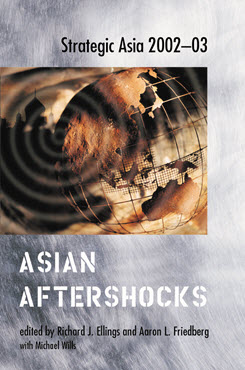Islam and Asian Security
The violence of September 11, 2001, and the Afghanistan campaign that followed raised troubling new questions about security in the Muslim world. Nowhere have these questions taken on greater urgency than in the diverse Muslim communities of Central, South, and Southeast Asia.
The violence of September 11, 2001, and the Afghanistan campaign that followed raised troubling new questions about security in the Muslim world. Nowhere have these questions taken on greater urgency than in the diverse Muslim communities of Central, South, and Southeast Asia. Although most westerners identify Islam with the Arab Middle East, some 60 percent of the world’s 1.2 billion Muslims resides in Asia. The Muslim population inhabits a swath of territory stretching from the mountains and deserts of Central Asia to the rice paddies and cities of tropical Southeast Asia. Lacking an Arab or Persian cultural core, Asian Muslims display far greater ethnic and civilizational variation than their Middle Eastern counterparts.
Although small numbers of believers can be found in almost all Asian countries, Muslims are an especially important presence in the 11 countries where they comprise an outright majority (the five Central Asian states, Afghanistan, Pakistan, Bangladesh, Malaysia, Brunei, and Indonesia) and in the five others where they constitute a politically prominent religious minority (India, northwest China, Singapore, southern Thailand, and the Philippines).
It is not simply the demographic girth of Asian Islam that has captured policymakers’ attention. During the long jihad war against Soviet occupation (1979–89) and the fierce Taliban campaign against rival Muslims (1994–2001), an estimated 50,000 volunteers from 60 Muslim countries traveled to Afghanistan to join with the mujahidin (jihad fighters). Tens of thousands more made their way to conservative Islamist madrassas (religious schools) along Pakistan’s border with Afghanistan where the Taliban leadership had earlier studied. In these fiercely independent institutions, students were instructed in an ideologized and entirely untraditional variant of their faith. They learned, among other things, that the Muslim community is locked in a fight to the finish with belligerent unbelievers led by the United States and Israel in alliance with Russia, India, and other secular powers. A peculiar response to globalization, this jihadi Islam blends the modern preoccupation with state power and global inequalities with an austere social conservatism, not least of all as regards the status of women and non-Muslims. In the late 1990s, after Osama bin Laden established his training camps in Afghanistan, 6,000 foreign nationals went a step further, undergoing initiation into the now infamous Al Qaeda.
Strategic Asia
The Strategic Asia annual edited volume incorporates assessments of economic, political, and military trends and focuses on the strategies that drive policy in the region. Learn more about Strategic Asia.


